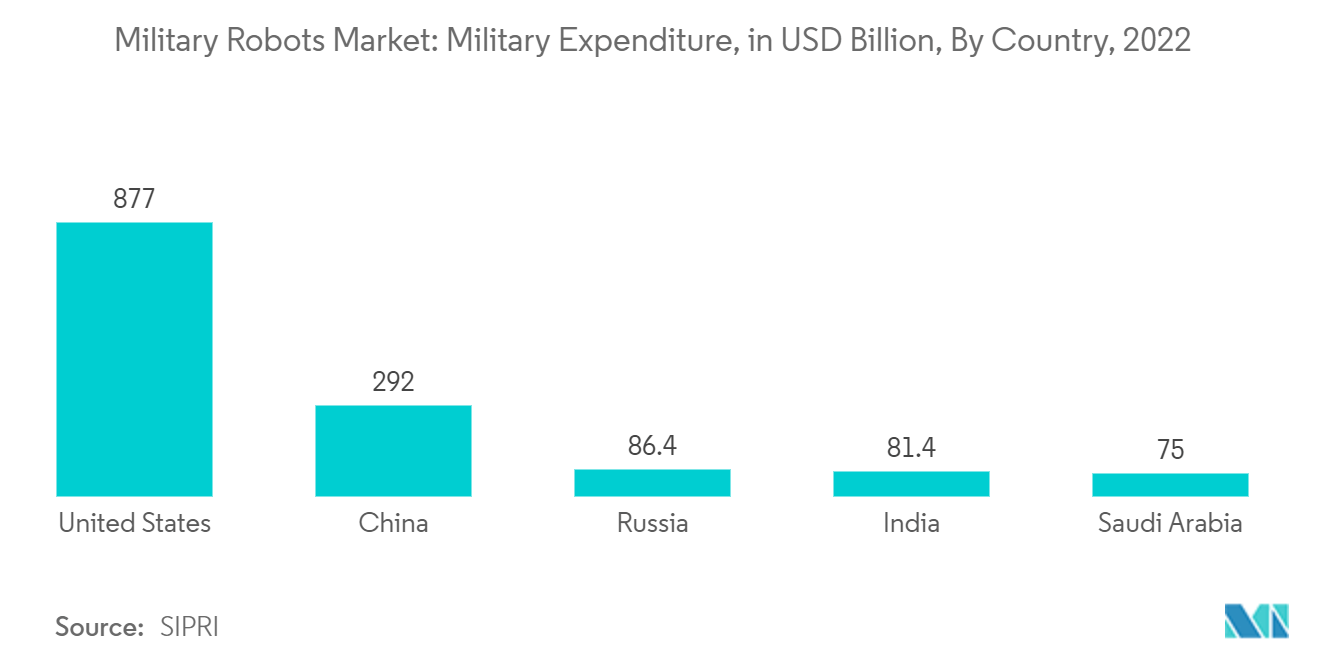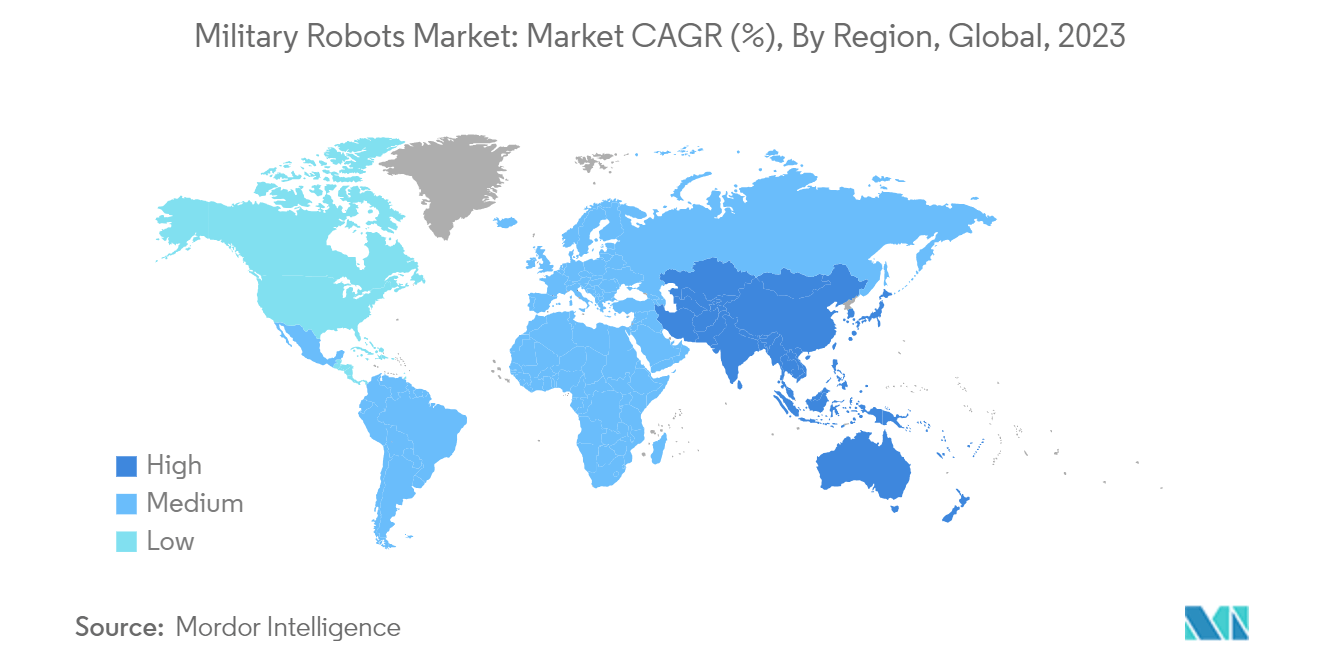Market Trends of Military Robots Industry
Land Segment Anticipated to Generate Highest Growth During the Forecast Period
- The land segment is expected to grow with the highest CAGR during the forecast period owing to the growing military expenditure by countries globally. The land forces are deploying sophisticated military robots in situations and areas deemed too dangerous, which can easily result in the death or capability restriction of the deployed troops.
- Several countries are either testing the current feasibility of robotics in their land-based armed forces or envisioning deploying them on a large scale in the future. Mine clearance military robots are technological advancements that have transformed the dangerous task of detecting and disarming land mines. These autonomous or semi-autonomous machines employ various sensor technologies, such as ground penetrating radar, metal detectors, and thermal imaging, to identify and locate explosive devices hidden beneath the surface.
- Similarly, firefighting military robots have emerged as an essential tool in managing fire-related emergencies in military scenarios. The Modular Advanced Armed Robotic System (MAARS), developed by QinetiQ North America, represents a significant advancement in military robotics. This tracked robot is designed for reconnaissance, surveillance, and target acquisition (RSTA) and to increase the security of personnel manning forward locations. Under the Man Transportable Robotic System Increment II (MTRS Inc II), the US Army is acquiring unmanned ground vehicles to support engineers, chemical, biological, radiological, and nuclear (CBRN) soldiers, and special operations forces.
- The new UGVs are replacing the aging non-standard fleet of robots for locating, identifying, and clearing landmines, unexploded ordnance, and improvised explosive devices, which may enhance the maneuverability and survivability of military personnel.
- Similarly, Russia created its first unit of strike robots, and it has plans to integrate a variety of robots and exoskeletons. In April 2021, the Russian Defense Ministry announced the creation of a separate unit of military robots comprising five Uran-9 robotic systems. Manufactured by Kalashnikov Concern, the Uran-9 is a tracked unmanned combat ground vehicle designed to assist combat, reconnaissance, counter-terrorism units, and fire support. The 12-ton robot is integrated with Ataka-guided weapons, anti-tank missiles, Shmel-M rocket launchers, a 30mm 2A72 automatic cannon, and a 7.62mm machine gun.
- Such plans to adopt robots are expected to drive the growth prospects of the land segment of the market studied.

Asia-Pacific Region likely to Witness Highest Growth During the Forecast Period
- The major countries in the region, like China, India, and Japan, among others, have been rapidly increasing their defense spending in the past few years. Out of the total defense spending, the countries have significantly invested in developing and deploying unmanned systems into the armed forces that can enhance their combat and surveillance capabilities.
- For instance, South Korea's Defense Acquisition Program Administration (DAPA) announced the successful completion of the exploratory development phase for the 66 Unmanned Surveillance Vehicle in April 2021. After completing the exploratory development phase, the agency is expected to begin the full-scale development of the strike-capable platform in the coming years.
- On the other hand, in 2021, the Indian Army carried out a drone swarm technology demonstration with 75 locally designed and developed drones buzzing in the skies and simulating a raft of missions, including offensive operations. A similar trend of local manufacturing is observed in other countries of the Asia-Pacific region. In January 2022, China introduced a quadruped robot to assist the military in logistics and reconnaissance missions.
- The country claims that it is the world's largest electrically-powered robot. The four-legged robot can reportedly carry up to 352 pounds (160 kilograms) of payload and run at six miles (10 kilometers) per hour. The escalating border tensions between various neighboring countries of the Asia-Pacific region are anticipated to accelerate the growth of the military robotics market during the forecast period.


